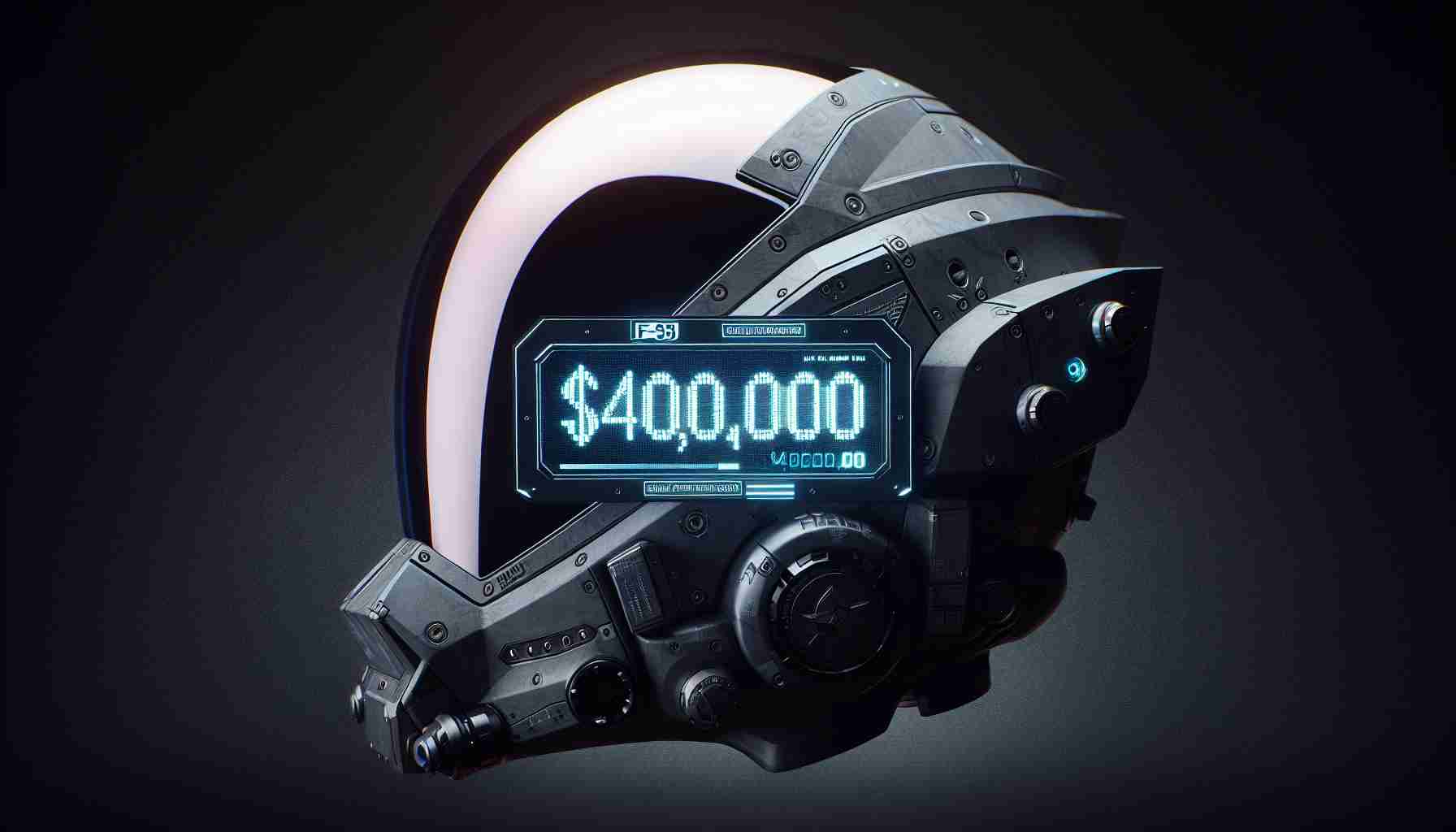In the world of military aviation, advanced technology often comes at a steep price, and the F-35 Joint Strike Fighter program exemplifies this phenomenon. One of the most talked-about aspects of the F-35 is not just the aircraft itself, but also the high-tech helmet worn by its pilots, which carries a staggering cost of approximately $400,000. This article delves into the reasons behind this exorbitant price, the technology involved, and its implications for military budgets and operations.
The F-35 helmet, officially known as the Integrated Helmet Display System (IHDS), serves as a critical piece of equipment for pilots. It is not just a helmet; it is a sophisticated system that integrates various technologies to enhance situational awareness and combat effectiveness. The helmet features a heads-up display (HUD) that projects vital flight data directly onto the visor, allowing pilots to access information without needing to look down at instruments. This integration is essential for modern aerial combat, where split-second decisions can mean the difference between mission success or failure.
One of the key innovations of the F-35 helmet is its ability to display data from multiple sensors and systems, providing a comprehensive view of the battlespace. This includes vital information such as enemy locations, aircraft status, and navigational data. As such, the pilot becomes a highly informed operator, able to react to threats and changes in the environment with unprecedented speed and accuracy. This transformation into a more integrated combat capability is a hallmark of modern military systems but comes with significant development and production costs.
It’s important to recognize that the development of the F-35’s helmet was not without its challenges. Initial versions faced numerous issues, including display calibration problems and technical glitches that affected functionality. The Joint Program Office and contractors worked diligently to resolve these issues, which contributed to the eventual high cost of the product. Consequently, what began as an ambitious vision for pilot equipment turned into an expensive endeavor, leading to the current price tag.
Moreover, the production and procurement processes for military technology are inherently complex and expensive. The few number of units produced compared to consumer electronics means that the costs are spread among a smaller number of products, driving up prices. In addition, the highly specialized nature of the components used in the F-35 helmet, including advanced optics and augmented reality features, adds to the overall expense. Every component of the helmet must meet stringent military specifications for durability and functionality, further increasing costs.
As discussions concerning military budgets continue to unfold, the $400,000 cost of the F-35 helmet raises important questions. Lawmakers and defense analysts are increasingly scrutinizing defense spending, often debating the balance between advanced technology and cost-effectiveness. While the improved capabilities offered by the F-35 helmet are evident, the significant price tag prompts necessary considerations regarding budget allocations and prioritization of resources within military programs.
In summary, the F-35 Integrated Helmet Display System represents a leap forward in pilot technology, merging cutting-edge engineering with operational requirements in modern warfare. However, the $400,000 cost serves as a stark reminder of the financial complexities involved in developing and procuring advanced military equipment. As the discourse surrounding military expenditures evolves, it will be imperative to balance the need for advanced capabilities against the reality of costs associated with producing such high-end technology.
Smart Spending in Military Tech: Tips, Life Hacks, and Insights
When it comes to military aviation, the balance between cutting-edge technology and budget constraints is crucial. The F-35 Joint Strike Fighter program showcases this intricate relationship with its advanced pilots’ helmet, which is priced at a remarkable $400,000. With such high costs involved, it’s evident that strategies for optimizing spending and understanding technological advancements are necessary. Here are some tips, life hacks, and interesting facts that can enhance your understanding of military tech and perhaps even apply these insights to other areas of life.
Understand What Drives Costs
One of the main reasons behind the high price of the F-35 helmet is the requirement for sophisticated technology. When purchasing technology in any field—whether civilian or military—it’s beneficial to understand what drives costs. Knowledge about the components, development challenges, and production scale can help anyone make more informed choices. For example, opting for high-quality components in consumer electronics can save money on replacements later due to enhanced durability.
Emphasize Lifespan and Durability
Military-grade technology, such as the F-35 helmet, adheres to the highest standards of durability and reliability. For personal purchases, consider investing in products designed to last longer, even if they represent a higher upfront cost. This can lead to savings in the long run, as you’ll spend less on replacements or repairs.
Maximize Technology Integration
Like the helmet’s integration of flight data and sensor inputs, look for ways to integrate technology into your own life. The right smart devices can streamline daily tasks, from home automation to task management. By choosing products that work seamlessly together, you can improve efficiency and reduce the ongoing costs of multiple stand-alone technologies.
Research Development Processes
Understanding the complexities and challenges in product development, as seen with the F-35 helmet, can provide valuable lessons. When investing in technology, take time to research the companies behind the products. Transparent companies are often those that provide reliable tech with robust support. This can prevent expensive mistakes during purchase due to faulty products.
Budget Wisely for Advanced Features
Military budgets are routinely scrutinized; similarly, it’s important to prioritize your spending. Consider carefully what features you genuinely need versus what is merely attractive. Invest in high-value features that will improve your operational capability or quality of life. Just as lawmakers weigh the benefits of high-tech military gear against costs, so too should you evaluate the importance of each feature in consumer products.
The Role of Innovation in Cost
Innovation often comes with a steep price tag. Recognizing that advanced features can increase costs may allow you to weigh the value of having the latest technology versus sticking with what works. Sometimes, previous-generation products offer nearly the same functionality at a fraction of the cost.
Stay Informed About Budget Allocations
Military budgets are a hot topic; similar concerns arise in personal finance. Staying informed about financial trends, technology advancements, and the potential costs associated with them can help you navigate your investments wisely. Follow industry news, engage with forums, or join groups that discuss technology and financial management.
Look to the Future of Defense Technologies
It’s fascinating to observe how advancements in military technology, such as the F-35 helmet, eventually influence consumer products. Many features that begin as military innovations migrate into the civilian market, often at lower price points. Keep an eye on emerging technologies within defense sectors to predict trends that could offer value in the consumer domain.
For further insights into military aviation and technology, as well as economic considerations, visit Defense.gov. Understanding these concepts can not only enhance your knowledge but also empower you to make smarter decisions in both personal investments and future purchases.






















